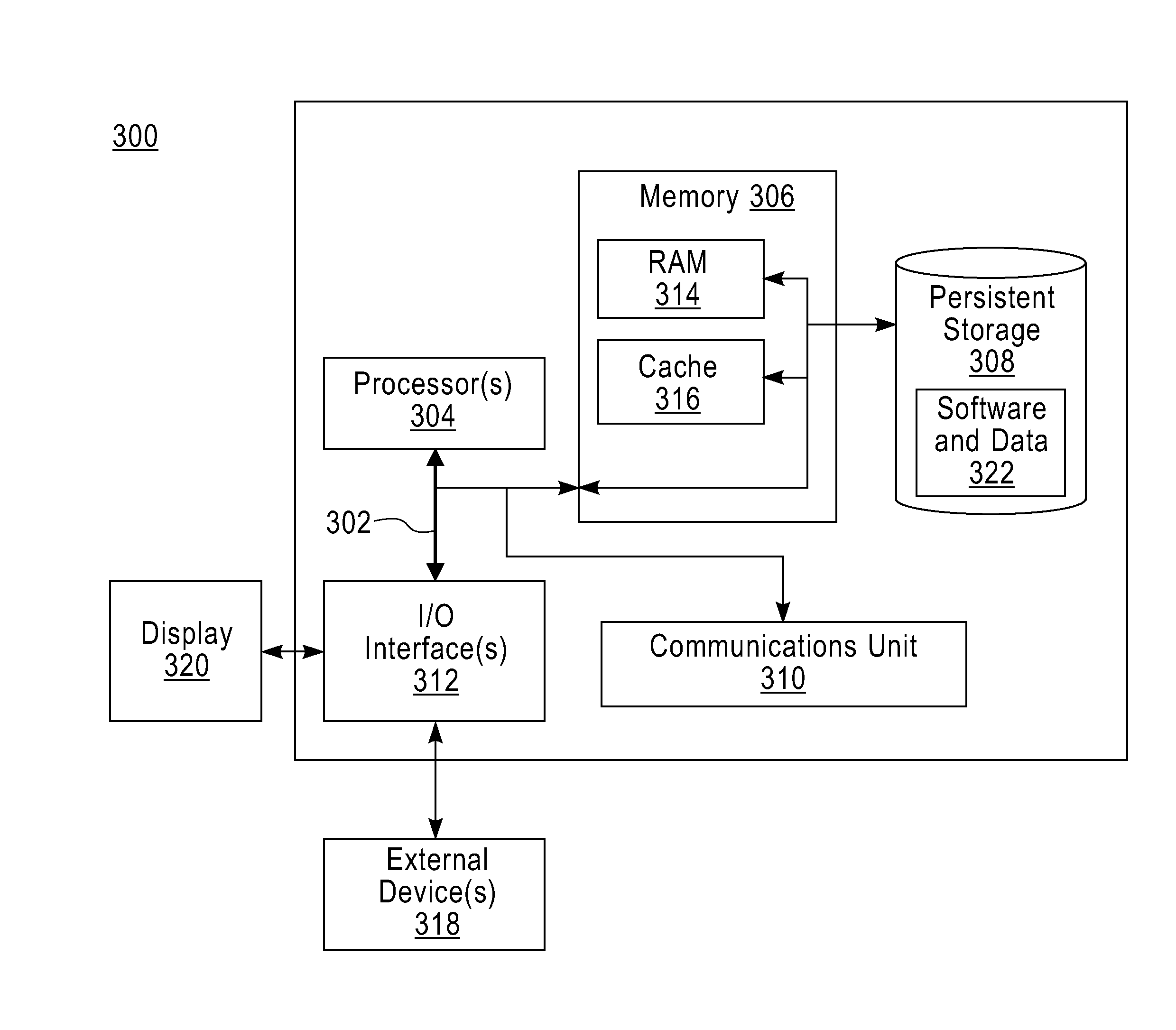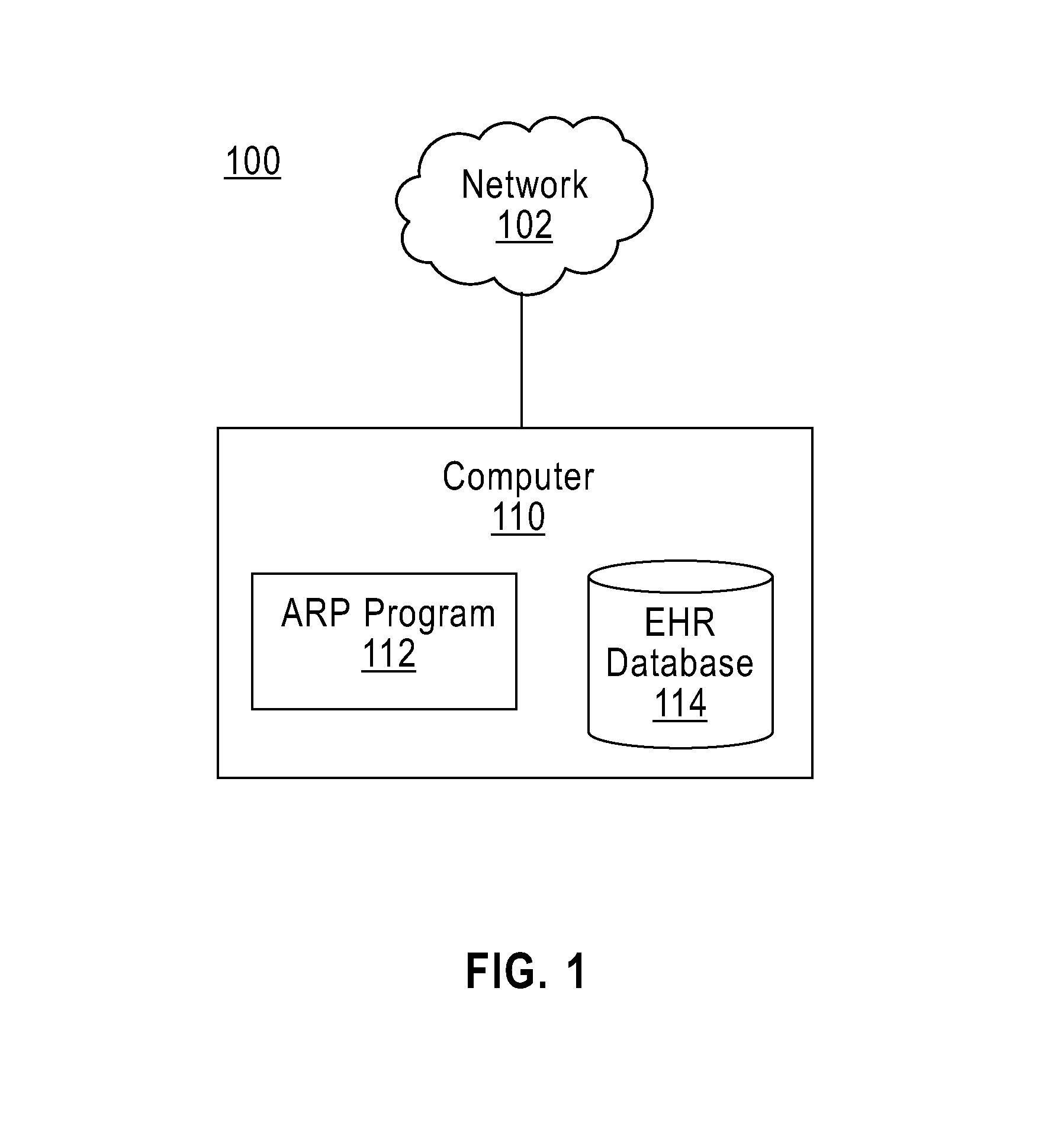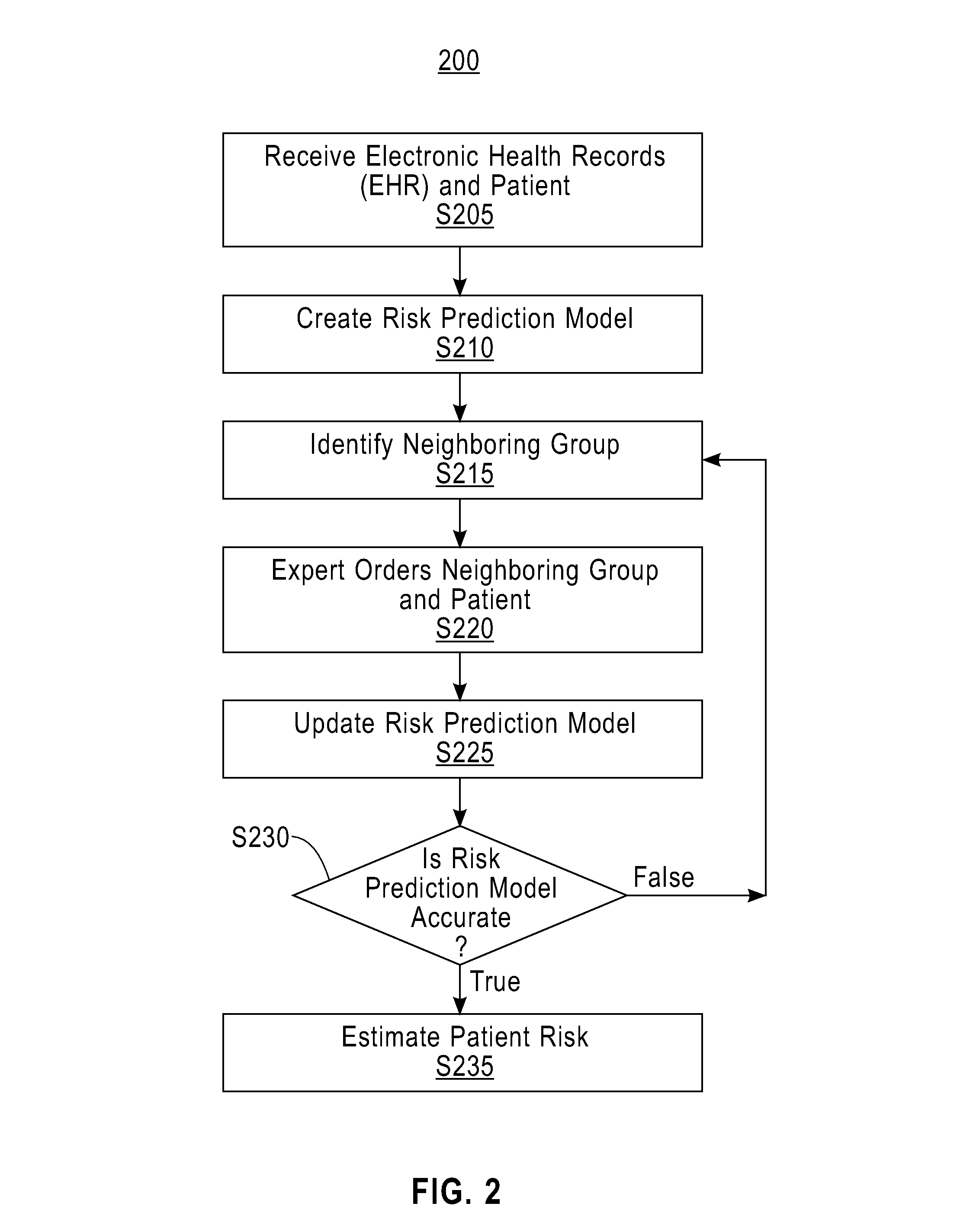Active patient risk prediction
a risk prediction and patient technology, applied in the field of active learning, can solve the problems of less stable performance of absolute question focused active learning methods and difficult to answer absolute questions
- Summary
- Abstract
- Description
- Claims
- Application Information
AI Technical Summary
Benefits of technology
Problems solved by technology
Method used
Image
Examples
Embodiment Construction
[0008]Embodiments of the present invention allow for the updating of a patient risk prediction model. The active patient risk prediction (ARP) program receives electronic health records for an original patient, the subject of the risk prediction, and a group of patients from which to create the risk prediction model. The ARP program creates the risk prediction model from the group of patients and then identifies a smaller (neighboring) group of patients from the group of patients that is similar to the original patient. An expert orders the group of patients and the original patient based upon their similarities. The ARP program receives this ordering and updates the risk prediction model. Determining neighboring groups of patients, ordering them, and then updating the risk prediction model based upon the ordering can happen any number of times and the goal is to create an accurate risk prediction model. ARP program then predicts the risk of the original patient suffering a disease,...
PUM
 Login to View More
Login to View More Abstract
Description
Claims
Application Information
 Login to View More
Login to View More - R&D
- Intellectual Property
- Life Sciences
- Materials
- Tech Scout
- Unparalleled Data Quality
- Higher Quality Content
- 60% Fewer Hallucinations
Browse by: Latest US Patents, China's latest patents, Technical Efficacy Thesaurus, Application Domain, Technology Topic, Popular Technical Reports.
© 2025 PatSnap. All rights reserved.Legal|Privacy policy|Modern Slavery Act Transparency Statement|Sitemap|About US| Contact US: help@patsnap.com



